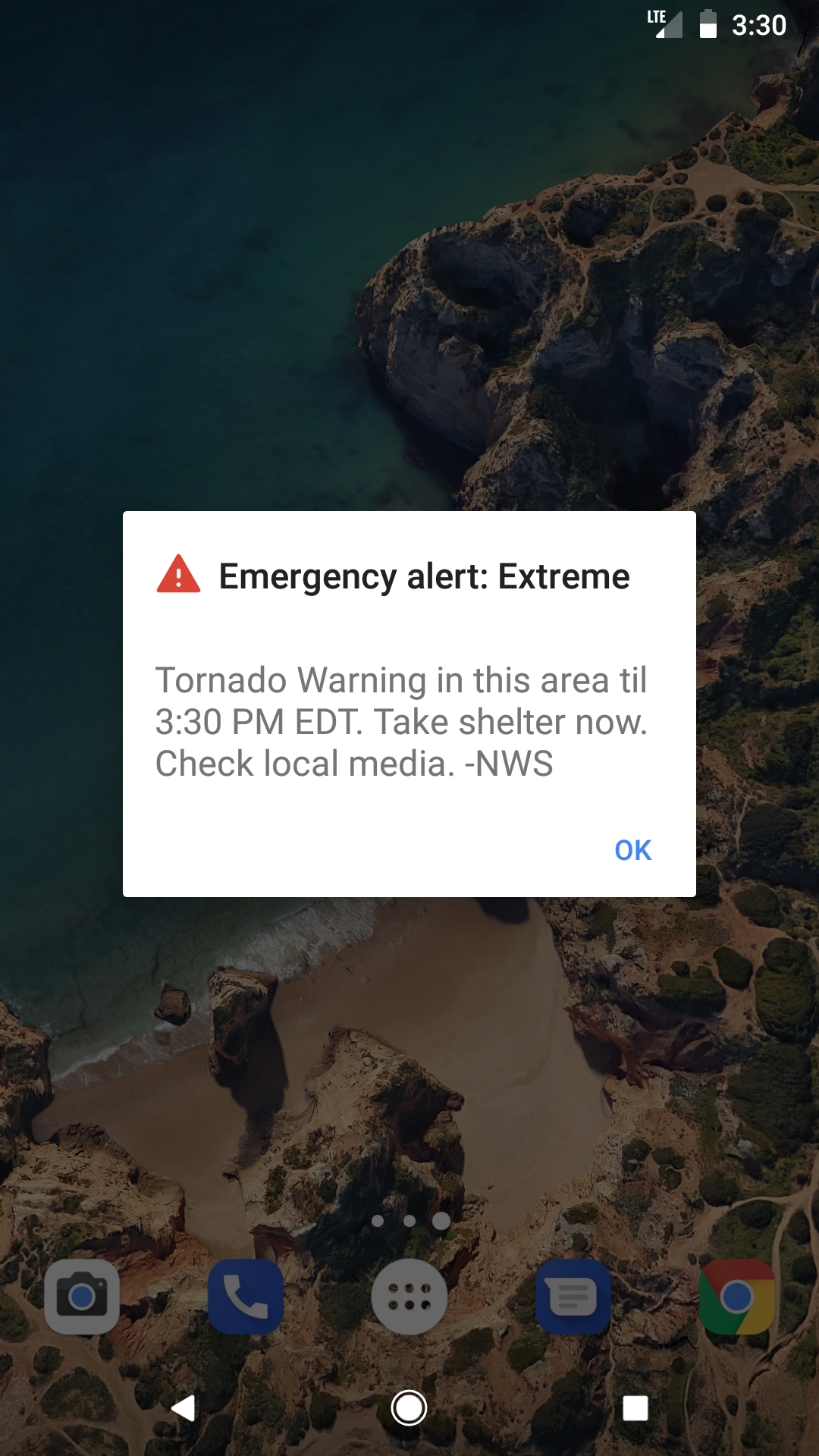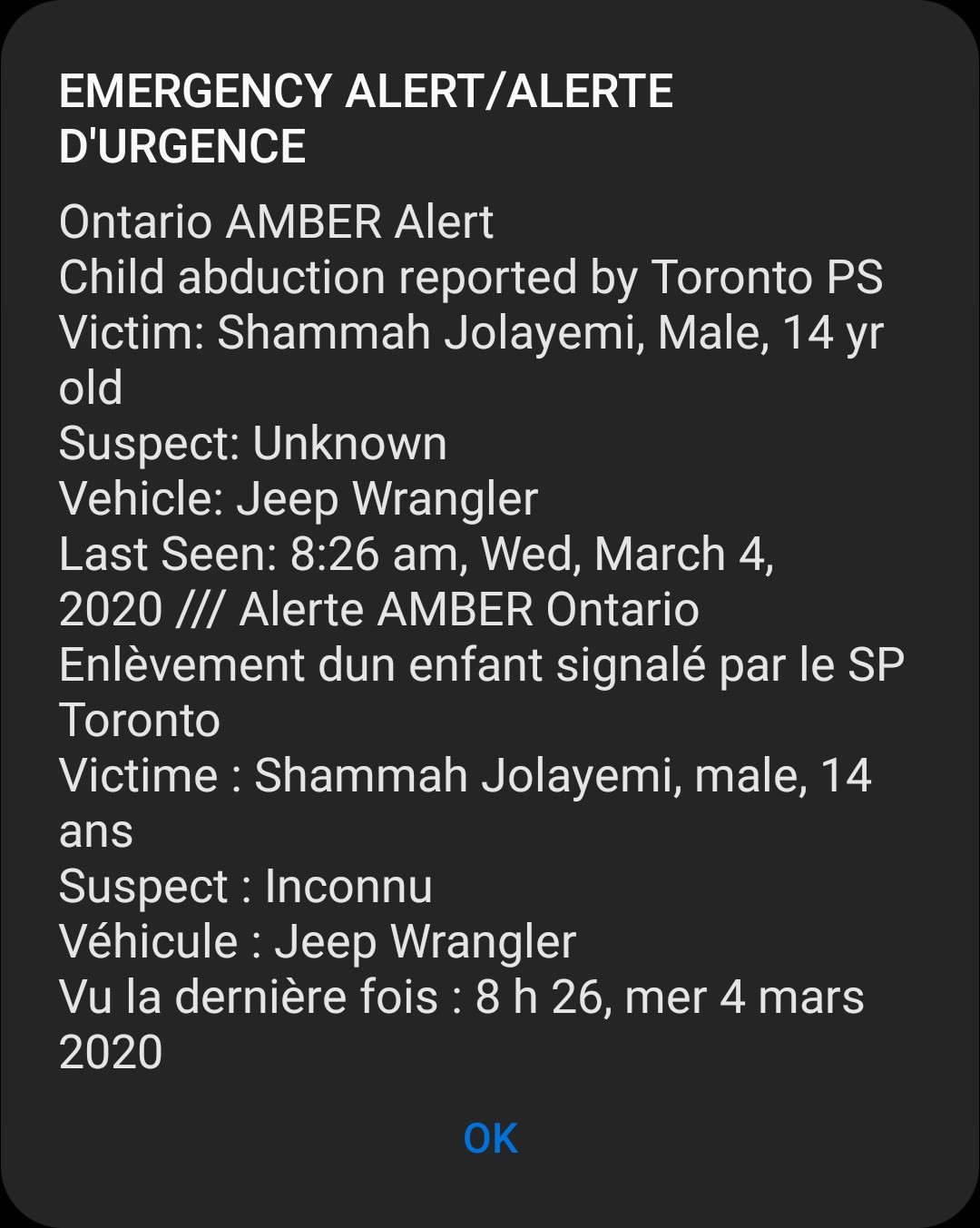|
EU-Alert
EU-Alert is the generic term for the European Public Warning Service based upon Cell Broadcast technology. EU-Alert is compatible with Wireless Emergency Alerts (WEA) formerly known as the Commercial Mobile Alert System (CMAS) standard as used in the United States. Since 2012, and by default, mobile phone OSes like Android, iOS, and Windows support EU-Alert/WEA/CMAS via Cell Broadcast for public warning messages. EU-Alert standard The EU-Alert standard (TS 102 900 V1.3.1) as defined by ETSI is the European Public Warning Service using the Cell Broadcast Service as a means of delivering public warning messages to the general public. Specific countries using the EU-Alert service are identified by replacing the letters EU with the Country Identification letters in ISO 3166-1 : * NL-Alert: The national variant of EU-Alert for the Netherlands. * GR-Alert: The national variant of EU-Alert for Greece. * LT-Alert: The national variant of EU-Alert for Lithuania. RO-Alert The national ... [...More Info...] [...Related Items...] OR: [Wikipedia] [Google] [Baidu] |
NL-Alert
NL-Alert is a Cell Broadcast alarm system in use by the Dutch government to quickly alert and inform citizens of hazardous or crisis situations. Using this system, authorities can send messages to users of mobile phones in specific areas by using specific cell towers to alert phones within their reach. NL-Alert is one of the first implementations of the EU-Alert or Reverse 1-1-2 legislation as defined by the binding European Electronic Communications Code (EECC) using the Cell Broadcast technology for the delivery of public warning messages to the general public. Usage of the Service The system was introduced nationally on 8 November 2012, and was first used in a large fire in Tolbert on 14 December 2012. The second use was in another fire in Meppel in 2013. NL-Alert has been used more than 200 times as of December 2017 for public warning purposes (e.g. large forest & industrial fires, severe weather conditions and gas leakages). Background NL-Alert is an addition to the ex ... [...More Info...] [...Related Items...] OR: [Wikipedia] [Google] [Baidu] |
Emergency Mobile Alert
Emergency Mobile Alerts (EMA) is an alerting network in New Zealand designed to disseminate emergency alerts to mobile devices. Emergency Mobile Alerts are messages about emergencies sent by New Zealand authorised emergency agencies to capable mobile phones. The alerts are sent to participating wireless providers who will distribute the alerts to their customers with compatible devices via Cell Broadcast, a technology best suitable for public warning as it simultaneously delivers messages to all phones using a Mobile Cell tower. Similar solutions are implemented in the United States (Wireless Emergency Alerts (WEA)), The Netherlands (NL-Alert), European Union (EU-Alert), Canada, Japan, Taiwan, Chile, Philippines. One2many B.V. provides this modern Emergency Mobile Alert system including the Cell Broadcast systems and the CAP (Common Alerting Protocol) based centralised Public Warning management system. Adoption Rate Emergency Mobile Alerts has been used in New Zealand since Novem ... [...More Info...] [...Related Items...] OR: [Wikipedia] [Google] [Baidu] |
Cell Broadcast
Cell Broadcast (CB) is a method of sending messages to multiple mobile telephone users in a defined area at the same time. It is defined by the ETSI’s GSM committee and 3GPP and is part of the 2G, 3G, 4G LTE (telecommunication) and 5G standards. It is also known as Short Message Service-Cell Broadcast (SMS-CB) or CB SMS. Unlike Short Message Service-Point to Point (SMS-PP), Cell Broadcast is a one-to-many geo-targeted and geo-fenced messaging service. History Cell Broadcast messaging was first demonstrated in Paris in 1997. Some mobile operators used Cell Broadcast for communicating the area code of the antenna cell to the mobile user (via channel 050), for nationwide or citywide alerting, weather reports, mass messaging, location-based news, etc. Cell broadcast has been widely deployed since 2008 by major Asian, US, Canadian, South American and European network operators. Not all operators have the Cell Broadcast messaging function activated in their network yet, ... [...More Info...] [...Related Items...] OR: [Wikipedia] [Google] [Baidu] |
Wireless Emergency Alerts
Wireless Emergency Alerts (WEA, formerly known as the Commercial Mobile Alert System (CMAS), and prior to that as the Personal Localized Alerting Network (PLAN)), is an alerting network in the United States designed to disseminate emergency alerts to mobile devices such as cell phones and pagers. Organizations are able to disseminate and coordinate emergency alerts and warning messages through WEA and other public systems by means of the Integrated Public Alert and Warning System. Background The Federal Communications Commission proposed and adopted the network structure, operational procedures and technical requirements in 2007 and 2008 in response to the ''Warning, Alert, and Response Network (WARN) Act'' passed by Congress in 2006, which allocated $106 million to fund the program. CMAS will allow federal agencies to accept and aggregate alerts from the President of the United States, the National Weather Service (NWS) and emergency operations centers, and send the alerts to ... [...More Info...] [...Related Items...] OR: [Wikipedia] [Google] [Baidu] |
Reverse 1-1-2
Reverse 1-1-2 is a public safety communications technology used by public safety organizations throughout the world to communicate with groups of people in a defined geographic area. Reverse 112 allows authorities to rapidly warn those in danger, directly through their mobile phones. Two European countries already have implemented an efficient Reverse 112 system. The system uses preferably Cell Broadcast technology to deliver predefined emergency messages. Examples of successful nationwide reverse-112 implementations can be found in Japan, Taiwan, South Korea, United States, Canada, United Arabic Emirates, Saudi Arabia, Philippines, Oman, Romania, The Netherlands, Greece, Chile, Peru, China, Russia and New Zealand. A possible alternative to Cell Broadcast is Location-Based SMS systems (LB-SMS). The location data accuracy of location based SMS is limited to the size of the mobile cell this is typically between 3 km and 15 km. LB-SMS needs to determine first the identities ... [...More Info...] [...Related Items...] OR: [Wikipedia] [Google] [Baidu] |
COVID19 - Cell Alert
Coronavirus disease 2019 (COVID-19) is a contagious disease caused by a virus, the severe acute respiratory syndrome coronavirus 2 (SARS-CoV-2). The first known case was identified in Wuhan, China, in December 2019. The disease quickly spread worldwide, resulting in the COVID-19 pandemic. The symptoms of COVID‑19 are variable but often include fever, cough, headache, fatigue, breathing difficulties, loss of smell, and loss of taste. Symptoms may begin one to fourteen days after exposure to the virus. At least a third of people who are infected do not develop noticeable symptoms. Of those who develop symptoms noticeable enough to be classified as patients, most (81%) develop mild to moderate symptoms (up to mild pneumonia), while 14% develop severe symptoms (dyspnea, hypoxia, or more than 50% lung involvement on imaging), and 5% develop critical symptoms (respiratory failure, shock, or multiorgan dysfunction). Older people are at a higher risk of developing severe s ... [...More Info...] [...Related Items...] OR: [Wikipedia] [Google] [Baidu] |
Public Safety
Public security or public safety is the prevention of and protection from events that could endanger the safety and security of the public from significant danger, injury, or property damage. It is often conducted by a state government to ensure the protection of citizens, persons in their territory, organizations, and institutions against threats to their well-being, survival, and prosperity. The public safety issues that a municipality, county, regional, or federal jurisdiction may handle include crimes (ranging from misdemeanors to felonies), structure fires, conflagrations, medical emergencies, mass-casualty incidents, disasters, terrorism, and other concerns. Public safety organizations are organizations that conduct public safety. They generally consist of emergency services and first responders such as law enforcement, fire services, emergency medical services, security forces, and military forces. They are often operated by a government, though some private ... [...More Info...] [...Related Items...] OR: [Wikipedia] [Google] [Baidu] |
Emergency Alert System
The Emergency Alert System (EAS) is a national warning system in the United States designed to allow authorized officials to broadcast emergency alerts and warning messages to the public via cable, satellite, or broadcast television, and both AM/ FM and satellite radio. The EAS became operational on January 1, 1997, after being approved by the Federal Communications Commission (FCC) in November 1994, replacing the Emergency Broadcast System (EBS). Its main improvement over the EBS, and perhaps its most distinctive feature, is its application of a digitally encoded audio signal known as Specific Area Message Encoding (SAME), which is responsible for the "screeching" or "chirping" sounds at the start and end of each message. This signal encodes locations an alert applies to, useful for specialized encoding and decoding equipment at broadcasting stations to automatically filter alert messages that do not apply to the area and to relay messages that do. Like the EBS, the system ... [...More Info...] [...Related Items...] OR: [Wikipedia] [Google] [Baidu] |
Alert Ready
The National Public Alerting System (NPAS; french: Système national d'alertes à la population), branded as Alert Ready (), is the national warning system in Canada, broadcast to Canadian television, radio, and wireless devices. The system consists of infrastructure and standards for the presentation and distribution of public alerts issued by federal or provincial/territorial government authorities (particularly public safety authorities)—such as for weather emergencies, AMBER Alerts, and other emergency notifications—through all broadcasters and last-mile distributors in the affected region, including television stations, radio stations, television providers, and mobile networks in the affected region. The system is based upon the Common Alerting Protocol (CAP; called the Canadian Profile of the Common Alerting Protocol, CAP-CP), while wireless alerts (Wireless Public Alerting System) use a Canadian variant of the Wireless Emergency Alerts (WEA) standard adopted in the ... [...More Info...] [...Related Items...] OR: [Wikipedia] [Google] [Baidu] |
Signalling System No
In signal processing, a signal is a function that conveys information about a phenomenon. Any quantity that can vary over space or time can be used as a signal to share messages between observers. The '' IEEE Transactions on Signal Processing'' includes audio, video, speech, image, sonar, and radar as examples of signal. A signal may also be defined as observable change in a quantity over space or time (a time series), even if it does not carry information. In nature, signals can be actions done by an organism to alert other organisms, ranging from the release of plant chemicals to warn nearby plants of a predator, to sounds or motions made by animals to alert other animals of food. Signaling occurs in all organisms even at cellular levels, with cell signaling. Signaling theory, in evolutionary biology, proposes that a substantial driver for evolution is the ability of animals to communicate with each other by developing ways of signaling. In human engineering, signals are t ... [...More Info...] [...Related Items...] OR: [Wikipedia] [Google] [Baidu] |
Swedish Civil Contingencies Agency
The Swedish Civil Contingencies Agency ( sv, Myndigheten för samhällsskydd och beredskap, ) is a Swedish administrative authority, organised under the Ministry of Justice. The agency is responsible for issues concerning civil protection, public safety, emergency management and civil defence. Responsibility refers to measures taken before, during and after an emergency or crisis. MSB work in close cooperation with the municipalities, the county councils, other authorities, organisations and the private sector to achieve increased safety and security at all levels of society. This is done through education, support, training exercises, regulation and supervision. The agency covers the whole spectrum of contingencies; from everyday road traffic accidents and fires, up to chemical emergencies, power cuts and other technical failures. Additionally, more serious emergencies, such as bomb threats and other antagonistic attacks, epidemics, natural disasters and war. In most cases, the re ... [...More Info...] [...Related Items...] OR: [Wikipedia] [Google] [Baidu] |








